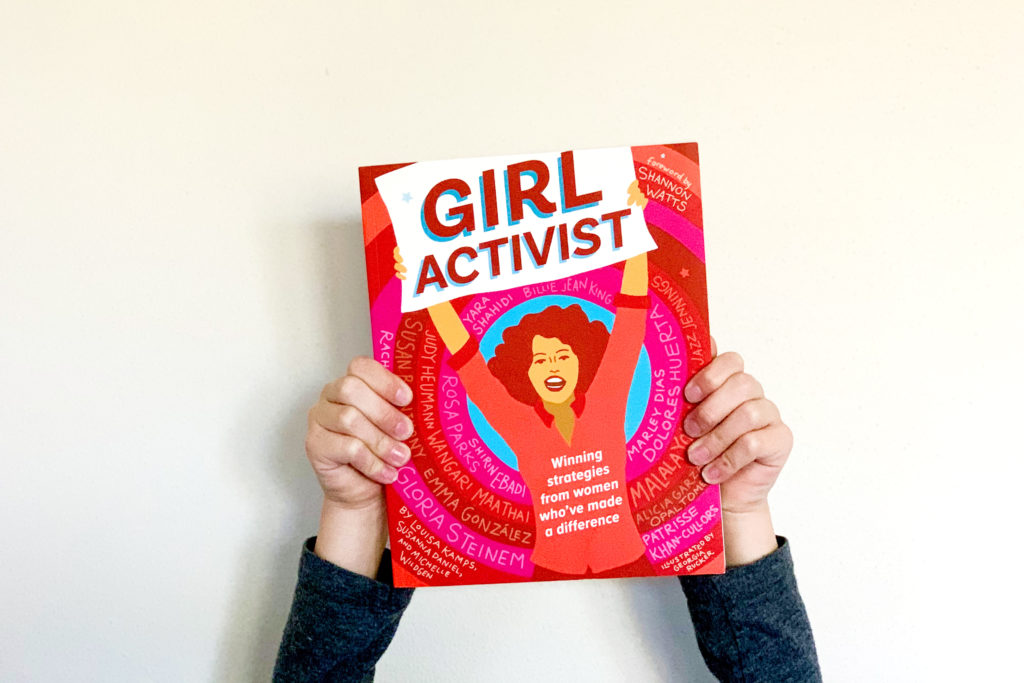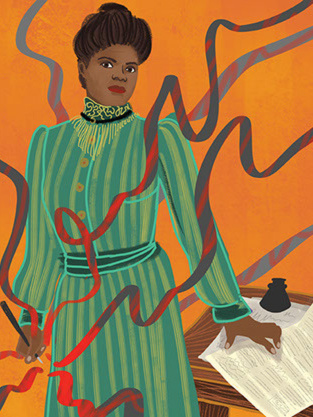
Can a girl change the world?
Heck yes! And a new book spotlights forty-plus girls, women and non-binary activists throughout history to prove it.
Girl Activist, published by Downtown Bookworks, features short biographies of changemakers that delve into their reasons for speaking out and what it takes to stand up for what they believe in and spark a movement.
The activists highlighted in the book have fought for gender equality, human rights, disability rights, civil rights, labor rights, immigration reform, environmental conservation and many other issues.
And the book was created by four Wisconsin women (and mothers): writers Louisa Kamps, Susanna Daniels and Michelle Wildgen and illustrator Georgia Rucker!
Louisa shares more about how Girl Activist came together and what working on it has meant for her.
You and your co-authors are all Madison-based writers. How did you work together on the book?
I ended up recruiting Michelle and Susanna to join me in the project, which was fun for me because I don’t think they’re capable of writing anything that isn’t interesting or surprising in some way. Basically, we divvied up different women and girls to profile and worked independently, but then I had the pleasure of learning about their subjects as they turned their pieces in.

What were some of the ideas that you noticed recurring in the stories?
One of the most important lessons I learned is that activism is very rarely one-and-done. Many of the women profiled here chipped away at their work for years. Maybe a few had some relatively large early successes. But for the most part, these women and girls have incredible stamina — a will to keep going and campaigning and pushing for change. It really made me embrace the idea of progress over perfection. A lot of people get tied up in knots by trying to be perfect and suffer mightily when they fail to reach whatever goal they’re working toward. But to get stuff done, sometimes you just have keep pushing forward and take setbacks in stride.
What were your favorite stories to write, and why?
It’s funny, I enjoyed most writing about young women who are doing brave things right now to change the world — Emma Gonzalez and Jasilyn Charger, for example — and who worked to change the world long before I was born, women like Ida B. Wells, Eleanor Roosevelt and Rachel Carson. Learning about history through their experiences and the cultural landscape that determined what they were fighting for and how hard they had to fight to be heard, at times when women were far more marginalized, was eye-opening and made me happy for the progress these women helped bring about. Thinking about vintage-edition and contemporary rabble-rousers at the same time really made realize how much the former paved the way for the latter.

What story was the most surprising or inspiring to you?
I’ve already mentioned her, but the journalist and anti-lynching activist Ida B. Wells blew my mind. She traveled through the south on her own, putting herself at great personal risk, to investigate lynchings and describe these horrific crimes to the world. That made a huge impression on me, a woman putting all else aside to this vital work. Wells also fortunately had a forward-looking husband who liked to cook and feed their kids, but still — she was straight-up amazing.
What does it mean to you to write a book celebrating such amazing women?
I think one of the biggest lessons I learned is that becoming involved with causes that matter to you and making a difference is very much within reach. Anyone can help improve other peoples’ lives or push for a good cause. There are a million ways to do it.
Who is this book intended for?
I think the book is written to suit a wide range of audiences — girls as young as third grade and well into high school can learn something from the book and be entertained.
As a mom of boys, what has it been like to write this book about girl heroes?
My own sons have not read the book, but that’s mostly because I’ve been yakking on about all the cool things these women and girls in the book have done, so they know most of their stories already. And I can say with certainty that many of the strategies for drawing attention to an important cause or picking up and starting over when setbacks occur described in the book are truly for anyone to use — I can see boys and gender-non-conformers being just as inspired as girls.
What is one thing you hope readers take away from Girl Activist?
We’ve highlighted some incredibly brilliant, tenacious, passionate women who have done amazing things. They’re heroes and icons, and sometimes their status can make them seem a little intimidating at first. But once you start noticing how the world could be a lot better for more people if certain things were changed and begin to champion the causes and ideas you care about, I think you’ll see that activism really is open to all, and anyone can make a difference. My own personal philosophy (reinforced by learning more about all the women and girls profiled in Girl Activist) is that it’s always good to err on the side of caring a lot — rather than trying to pretend you don’t — about the issues and policies and traditions that end up having a huge impact on our lives. I think we can all rise up and surprise ourselves by unleashing the power we already have within us!